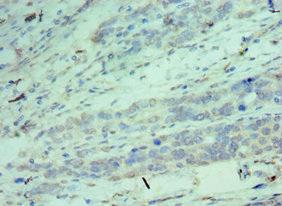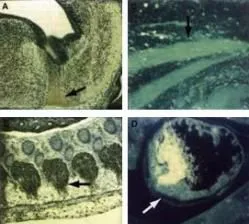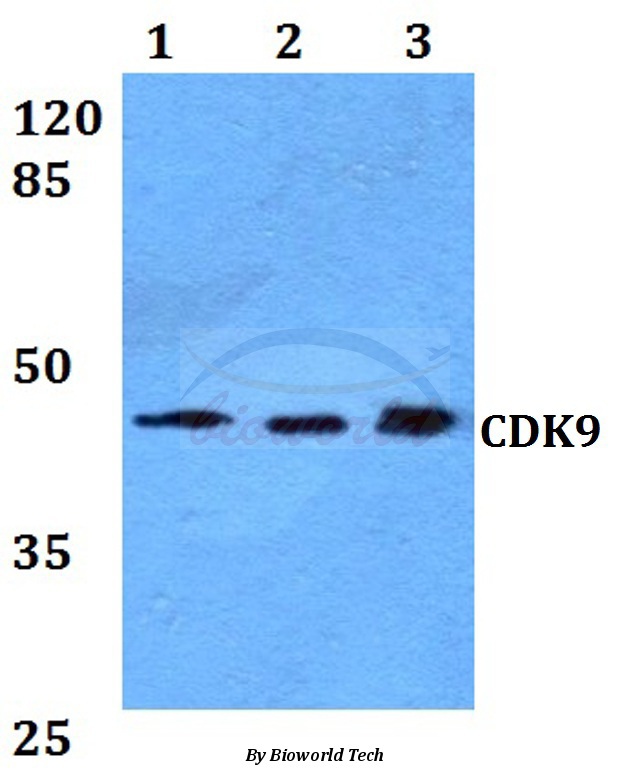CDK9 antibody [N3C3]
GTX107758
ApplicationsImmunoFluorescence, Western Blot, ImmunoCytoChemistry, ImmunoHistoChemistry, ImmunoHistoChemistry Paraffin
Product group Antibodies
TargetCDK9
Overview
- SupplierGeneTex
- Product NameCDK9 antibody [N3C3]
- Delivery Days Customer9
- Application Supplier NoteWB: 1:500-1:3000. ICC/IF: 1:100-1:1000. IHC-P: 1:100-1:1000. *Optimal dilutions/concentrations should be determined by the researcher.Not tested in other applications.
- ApplicationsImmunoFluorescence, Western Blot, ImmunoCytoChemistry, ImmunoHistoChemistry, ImmunoHistoChemistry Paraffin
- CertificationResearch Use Only
- ClonalityPolyclonal
- Concentration1 mg/ml
- ConjugateUnconjugated
- Gene ID1025
- Target nameCDK9
- Target descriptioncyclin dependent kinase 9
- Target synonymsC-2k, CDC2L4, CTK1, PITALRE, TAK, cyclin-dependent kinase 9, CDC2-related kinase, cell division cycle 2-like protein kinase 4, cell division protein kinase 9, serine/threonine protein kinase PITALRE, tat-associated kinase complex catalytic subunit
- HostRabbit
- IsotypeIgG
- Protein IDP50750
- Protein NameCyclin-dependent kinase 9
- Scientific DescriptionThe protein encoded by this gene is a member of the cyclin-dependent protein kinase (CDK) family. CDK family members are highly similar to the gene products of S. cerevisiae cdc28, and S. pombe cdc2, and known as important cell cycle regulators. This kinase was found to be a component of the multiprotein complex TAK/P-TEFb, which is an elongation factor for RNA polymerase II-directed transcription and functions by phosphorylating the C-terminal domain of the largest subunit of RNA polymerase II. This protein forms a complex with and is regulated by its regulatory subunit cyclin T or cyclin K. HIV-1 Tat protein was found to interact with this protein and cyclin T, which suggested a possible involvement of this protein in AIDS. [provided by RefSeq]
- Storage Instruction-20°C or -80°C,2°C to 8°C
- UNSPSC12352203
References
- CDK12 drives breast tumor initiation and trastuzumab resistance via WNT and IRS1-ErbB-PI3K signaling. Choi HJ et al., 2019 Oct 4, EMBO RepRead more



![ELISA analysis of antigen using GTX60442 CDK9 antibody [1B5A7]. Red : Control antigen 100ng Purple : Antigen 10ng Green : Antigen 50ng Blue : Antigen 100ng](https://www.genetex.com/upload/website/prouct_img/normal/GTX60442/GTX60442_20170912_ELISA_w_23061123_668.webp)
![ELISA analysis of antigen using GTX60443 CDK9 antibody [1B5D10]. Red : Control antigen 100ng Purple : Antigen 10ng Green : Antigen 50ng Blue : Antigen 100ng](https://www.genetex.com/upload/website/prouct_img/normal/GTX60443/GTX60443_20170912_ELISA_w_23061123_795.webp)


